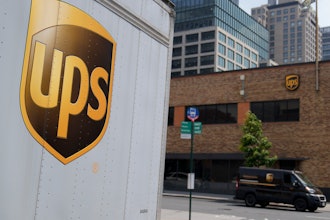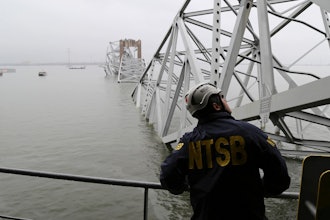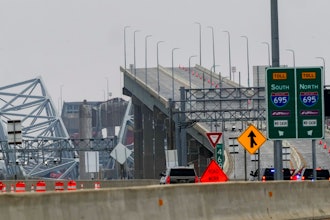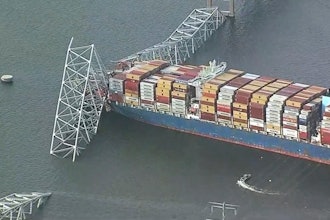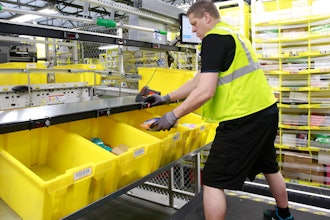Vehicle fleets are an essential part of the manufacturing and transporting process of nearly every industry. They can also be one of the biggest sources of job-related danger and injury if not handled properly. To prevent injury and property destruction, what are the eight most important factors of fleet safety, and how can you implement them in your own fleet?
1. Identify Drivers. First, it’s essential to identify and hire the safest drivers. Drivers with good motor vehicle histories are often the best choice, but it’s also essential to actively monitor their driving habits and behaviors. Safety becomes even more important if your fleet drivers are making long or cross-country delivery runs — driver fatigue is one of the most common causes of accidents. According to the National Highway Traffic Safety Administration, more than 100,000 accidents happen every year because drivers are overtired. We’ll discuss driver fatigue more in depth in a moment.
2. Leadership. No fleet safety program is complete without the constant participation and oversight of leadership. Not only does this help ensure the safety program is used correctly, it encourages drivers to adhere to procedures and remain safe while on the road.
Everyone in a leadership position should be trained on all aspects of the fleet safety program — even and especially the ones that are specific to the drivers. It’s a lot easier to answer questions if you’ve been through the training first, after all.
3. Driver Screening. The next step is to screen your drivers thoroughly to ensure only the safest drivers are allowed to join your fleet. We’ve already mentioned this briefly, but there are several key things you can do to ensure driver safety.
First, especially for CDL-certified drivers, make sure each driver’s certification is verifiable and comes from an accredited school or college. Don’t let your drivers cut corners when it comes to their certification — not only does it potentially compromise them, but it could potentially compromise the safety of your fleet.
Make sure you conduct thorough background checks and motor vehicle record checks for each driver. These also help improve your overall hiring standards. Once you’ve hired your drivers, have them complete road tests and written procedural testing to ensure each driver’s skill level is equal to your expectations for your fleet drivers.
Finally, create and maintain a consistent safety standard for all your drivers, regardless of experience or skill level.
4. Driver Training. Veteran drivers might balk at the idea of having to take a training course when they apply for a new job, but requiring driver training for all of your drivers will create the sort of fleet safety standard you need to maintain the company’s productivity.
In addition to training courses, all your drivers should be able to reference safety and procedure information at all times. This could be as low-tech as a manual kept in the glove compartment of the truck, or more high-tech, such as a website or database that can be accessed from anywhere.
5. Vehicle Inspections. A vehicle inspection should be a major part of every driver’s preparations for an upcoming delivery run. Not only do these inspections enable drivers to familiarize themselves with the vehicle, but they also become a form of preventive maintenance so you can address problems before they become large enough to interfere with fleet functioning.
Basic vehicle inspections should include a walk-around check of all lights and signals — this step may require two people, one to inspect the lights and one to actually turn them on and off — as well as all functioning aspects of the truck.
A mechanic may need to complete a more in-depth inspection, but it should include engine, drive train and suspension inspections. Inspections are also an ideal time to determine if any of these components need replacing or repair — adding a new leaf to the truck’s leaf springs could help improve payload capacity without having to replace the entire rear suspension of the vehicle. You can assess all these things during a regular vehicle inspection.
Create a formal plan for vehicle maintenance to ensure the same level of quality control throughout the entire fleet.
6. Management. Fleet driving is by nature a very independent job — drivers are often alone on the road for hours at a time, with phone and radio as their only contacts with home base. In spite of the independent nature of this job, it’s important to actively manage your drivers. This helps ensure every employee is following the policies and procedures you’ve put in place — constant reinforcement makes them easier to remember, even if your drivers don’t think about them until they’re necessary.
It’s also essential to manage accidents as they occur. Accidents are part of life on the road, so managing them quickly can help ensure your fleet schedule isn’t affected by an accident, and can help mitigate the cost of the accidents when they occur.
7. Policies. Policies are the backbone of any fleet safety program. These policies outline everything from how long your drivers can be on the road to the type of fuel they can fill their trucks with and everything in between. You should have these policies in writing and easily accessible at all times. You should also include policies in all training courses, and company management should reference them as often as possible to reinforce their importance.
8. Procedures. Procedures and policies go hand in hand — the policy outlines the things that need to be done, and the procedure includes step-by-step instructions on how to complete the necessary items. Again, company leadership should teach and reinforce these to ensure their effectiveness.
While it may not be possible to avoid every accident or every violation of company policy, the core of fleet safety is in reinforcing those key tenets and making sure every driver is aware of both the fleet safety plan and their role in maintaining a safe and effective workplace.
Megan Ray Nichols is a freelance STEM writer and blogger whose work has appeared on Manufacturing Business Technology, American Machinist, and IoT Evolution. Read more posts by Megan on her blog, Schooled By Science, and follow her on Twitter @nicholsrmegan.












